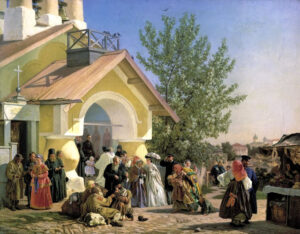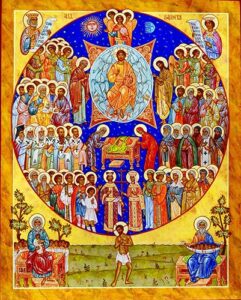The Orthodox Christian Church places great emphasis on engaging all five senses during the Divine Liturgy, its central worship service. Here’s how each sense is typically engaged:
Sight: Orthodox churches are rich in visual symbolism. Icons, depicting Christ, the Virgin Mary, saints, and biblical scenes, adorn the walls. These icons serve as windows into the heavenly realm, aiding worshippers in focusing their thoughts on spiritual matters. The architecture of Orthodox churches often includes elements like domes, iconostases (icon screens), and candle-lit interiors, all contributing to a visually immersive worship experience.
Hearing: The Divine Liturgy involves a rich array of sounds, including chanting, singing, prayers, and readings from Scripture. The chanting of hymns and psalms, often performed a capella or accompanied by simple instruments, creates an atmosphere conducive to prayer and meditation. The prayers and readings from Scripture are also essential auditory elements of the service, conveying the Word of God to the worshippers.
Smell: Incense plays a prominent role in Orthodox worship. The sweet aroma of incense is used symbolically to represent the prayers of the faithful rising up to God. As it fills the air during the service, it creates a sense of sacredness and reverence. The use of incense dates back to ancient times and is deeply rooted in the tradition of the Church.
Taste: The central act of worship in the Orthodox Liturgy is the Eucharist, or Holy Communion, where worshippers partake of bread and wine, believed to become the body and blood of Christ. This act engages the sense of taste in a profound way, as believers receive the sacrament with reverence and faith, understanding it as a participation in the divine life of Christ.
Touch: Worshippers may engage in physical acts of reverence and participation during the service. This can include crossing themselves, bowing, kneeling, or kissing icons and other sacred objects. The physical movements and gestures serve to involve the whole person in worship, connecting the body with the spirit in prayer and devotion.
In sum, the Orthodox Church seeks to engage all five senses in the Divine Liturgy, recognizing that human beings are holistic creatures who experience and express their faith through various sensory channels. This multi-sensory approach helps worshippers to enter into a deeper and more profound encounter with the divine during the sacred act of worship.





